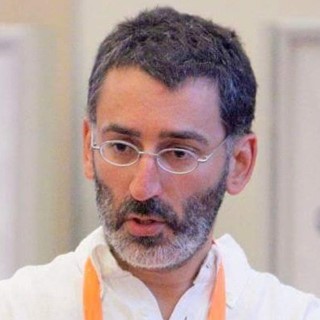ERC Advanced Grant: Nanoscale Aromaticity and Supramolecular Electronic Materials ARO-MAT (Project Number: 885606)
 Conspectus: ARO-MAT targets emergent cooperative electronic and magnetic phenomena in molecules with dimensions of 5–25 nm (i.e. as big as many proteins). The project is developing supramolecular architectures with large pi-systems and well-defined geometries, in which the frontier orbitals coherently delocalize charge over the whole nanostructure. Aromaticity is a key emergent phenomenon; it can be defined as the ability of a cyclic molecule to sustain a ring current when placed in a magnetic field. Until recently, it was thought that aromaticity is restricted to small molecules, with circuits of less than about 22 pi-electrons. Anderson has shown that circuits of more than 160 pi-electrons (circumference > 15 nm) can exhibit strong aromatic ring currents. Testing even larger rings will elucidate the link between aromaticity and the persistent currents found in non-molecular mesoscopic rings (diameter 50–500 nm). ARO-MAT is exploring the effects of molecular size and topology on nanoscale aromaticity. Other emergent phenomena to be addressed include the formation of open-shell singlet polyradical ground states, magnetic bistability in systems with many paramagnetic metal centers, and the control of charge transport through single-molecule devices by quantum interference. This multidisciplinary project combines organic synthesis, supramolecular chemistry, theory, electronic structure calculations, NMR and EPR spectroscopy, magnetochemistry, molecular electronics and low-temperature charge transport experiments. The core objective is to create low band gap materials with unprecedented electronic and magnetic properties, and to understand the structure-property relationships governing the behavior of these new materials. Most of the target structures are based on metalloporphyrins because of their redox activity, stability, structural versatility, suitability for template-directed synthesis and ability to position multiple strongly coupled paramagnetic metal centers.
Conspectus: ARO-MAT targets emergent cooperative electronic and magnetic phenomena in molecules with dimensions of 5–25 nm (i.e. as big as many proteins). The project is developing supramolecular architectures with large pi-systems and well-defined geometries, in which the frontier orbitals coherently delocalize charge over the whole nanostructure. Aromaticity is a key emergent phenomenon; it can be defined as the ability of a cyclic molecule to sustain a ring current when placed in a magnetic field. Until recently, it was thought that aromaticity is restricted to small molecules, with circuits of less than about 22 pi-electrons. Anderson has shown that circuits of more than 160 pi-electrons (circumference > 15 nm) can exhibit strong aromatic ring currents. Testing even larger rings will elucidate the link between aromaticity and the persistent currents found in non-molecular mesoscopic rings (diameter 50–500 nm). ARO-MAT is exploring the effects of molecular size and topology on nanoscale aromaticity. Other emergent phenomena to be addressed include the formation of open-shell singlet polyradical ground states, magnetic bistability in systems with many paramagnetic metal centers, and the control of charge transport through single-molecule devices by quantum interference. This multidisciplinary project combines organic synthesis, supramolecular chemistry, theory, electronic structure calculations, NMR and EPR spectroscopy, magnetochemistry, molecular electronics and low-temperature charge transport experiments. The core objective is to create low band gap materials with unprecedented electronic and magnetic properties, and to understand the structure-property relationships governing the behavior of these new materials. Most of the target structures are based on metalloporphyrins because of their redox activity, stability, structural versatility, suitability for template-directed synthesis and ability to position multiple strongly coupled paramagnetic metal centers.
Principal Investigator:
Prof. Harry L. Anderson
(Oxford University, Department of Chemistry)


